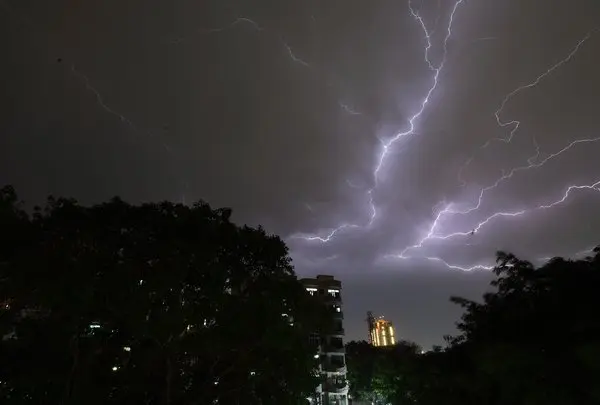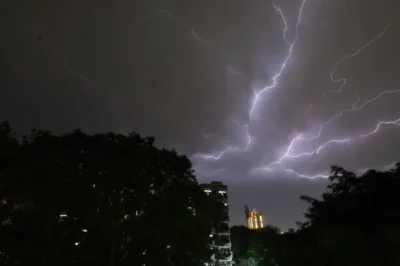
On May 21, 2025, Delhi and the National Capital Region (NCR) experienced an abrupt and intense weather shift as a powerful dust storm swept through the region, bringing temporary relief from a prolonged heatwave. The storm, characterized by high winds, reduced visibility, and subsequent hail and rain, disrupted daily life and highlighted the city’s vulnerability to extreme weather events.
Heatwave Conditions Preceding the Storm
Prior to the storm, Delhi was grappling with extreme heat conditions. The temperature soared above 40°C, with the heat index, or “feels-like” temperature, reaching a scorching 50.2°C around noon. High humidity levels exacerbated the discomfort, making it one of the most oppressive days of the season. The India Meteorological Department (IMD) had issued heatwave warnings, urging residents to take precautions against the intense heat.
Sudden Onset of the Dust Storm
In the evening, the weather took a dramatic turn as strong, dust-laden winds, reaching speeds of up to 79 km/h, swept across the city. The storm reduced visibility to near zero in many areas, including Noida and Ghaziabad. The IMD attributed the storm to a cyclonic circulation over Haryana and an east-west trough extending from Punjab to Bangladesh. These meteorological conditions combined to create the perfect storm, catching many residents off guard.
Impact on Infrastructure and Daily Life
The dust storm caused significant disruption across the NCR. Over 50 trees were uprooted, and numerous billboards and electric poles were knocked down, blocking roads and causing traffic jams during peak evening hours. In Greater Noida, a billboard fell onto a car on the Dwarka Expressway, highlighting the severity of the storm’s impact. The storm also led to flight disruptions, with several flights delayed or diverted due to poor visibility and strong winds.
Health and Environmental Concerns
The dust storm exacerbated health concerns, particularly for individuals with respiratory conditions. The Air Quality Index (AQI) soared to 213, categorizing it as ‘poor’ by the Central Pollution Control Board. The particulate matter in the air posed risks to vulnerable populations, including children, the elderly, and those with pre-existing health conditions. Environmental experts have raised alarms about the increasing frequency and intensity of such events, linking them to broader climate change patterns.
Government Response and Public Advisory
In response to the storm, the IMD issued a red alert for the region, forecasting continued unstable weather, including light to moderate rain, thunder, and gusty winds. Authorities advised residents to stay indoors during the storm, avoid travel unless necessary, and take precautions to protect themselves from the adverse effects of the storm. Emergency services were mobilized to clear blocked roads and restore power in affected areas.
Looking Ahead: Preparing for Future Extremes
The sudden onset of the dust storm serves as a stark reminder of the increasing unpredictability of weather patterns in urban centres like Delhi. Experts emphasize the need for enhanced infrastructure resilience, improved forecasting systems, and public awareness campaigns to prepare for such extreme events. Urban planners are also advocating for the creation of green spaces and the adoption of sustainable practices to mitigate the urban heat island effect and reduce the impact of future storms.
In conclusion, while the dust storm provided temporary relief from the oppressive heat, it also underscored the vulnerabilities of Delhi and its residents to extreme weather events. As climate change continues to influence weather patterns, it is imperative for both authorities and citizens to take proactive measures to adapt to these changing conditions and build a more resilient urban environment.









































Leave a Reply